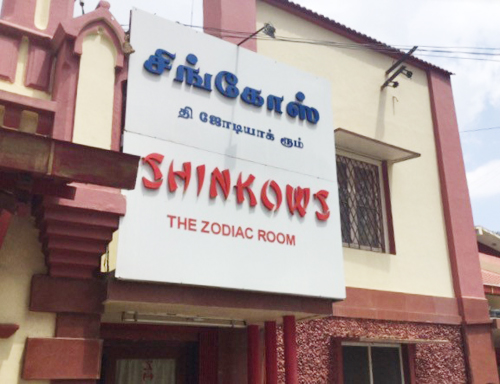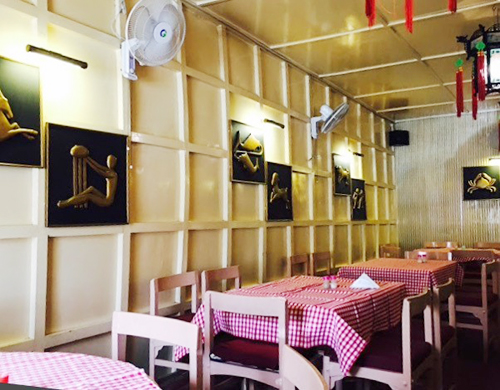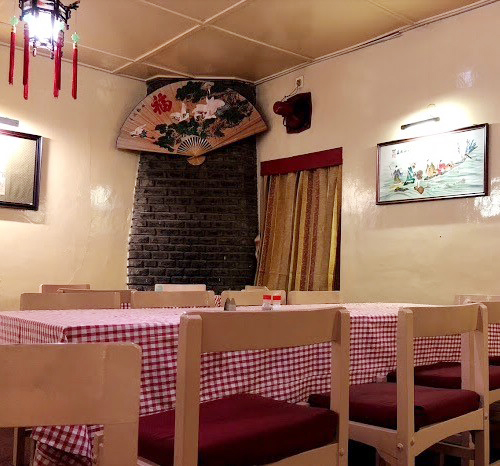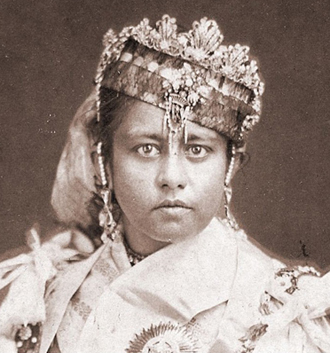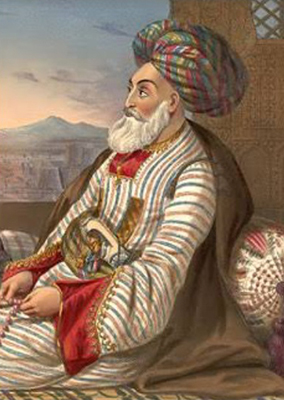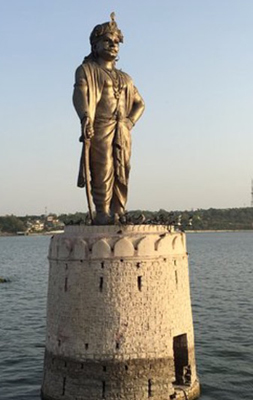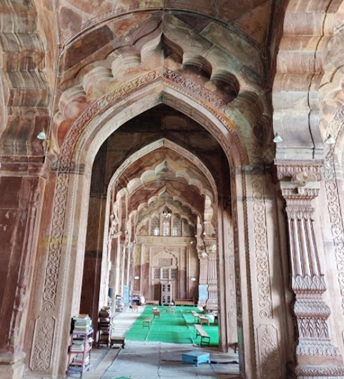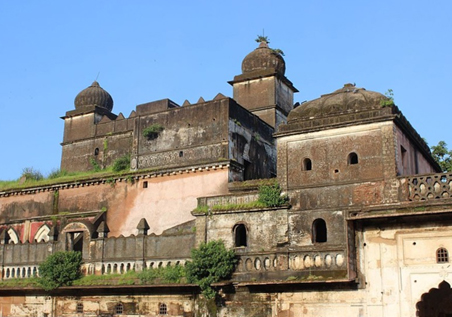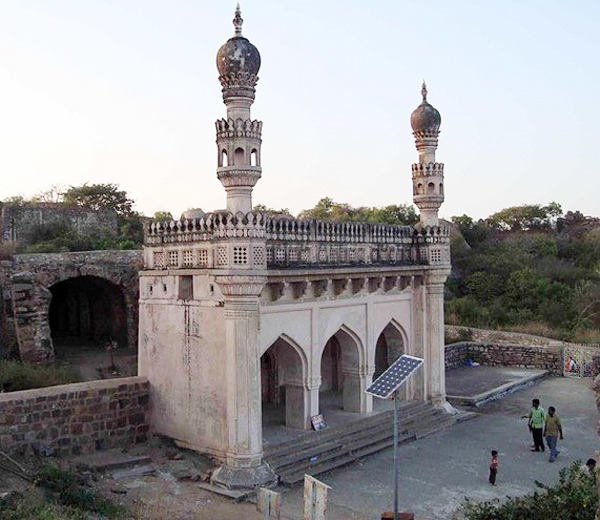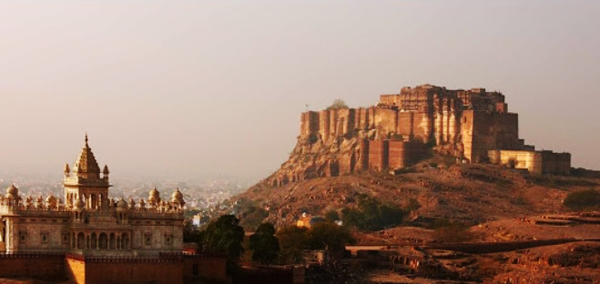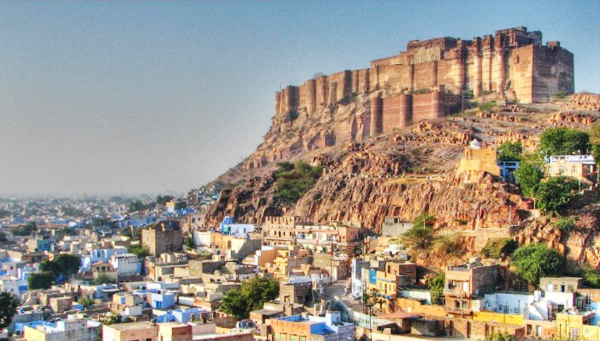And a Designer ... too - Sabyasachi
Keya Dutt
(This is an article printed in the city magazine, Kolkata, many years back.)
Sabyasachi Mukherjee or Sabya, is a now a world renowned fashion designer who regularly shows in India, UK, USA and have buyers from the West, Japan and of course India. This talented multi faceted man, a fashion designer par excellence, is now increasingly involved in designing the clothes and the sets of huge Bollywood films. Now that his brand is well established, he is opening fashion stores all over India.
80/2 Topsia South is Sabyasachi’s address for the new fashion store for bridal wear. The heavy door at the address was artfully dilapidated and swung back smoothly and I was struck by the oasis of silence as I entered the cool, high ceiling store. Sabyasachi welcomed me and to my comment on the noisy traffic outside, said, “I want people to come in from the jams, horns and bad roads outside, to this.”
The first thing one sees on entering the store is a huge antique mirror with baroque carved wooden frame on one entire wall opposite the front door. A long corridor with an antique wooden garden seat leads to the store proper. Walls of charcoal grey as he later said, “This is the perfection in imperfection, the grey is asymmetrically applied.” A collection of rare black and white framed photographs of tragedy kings and queens of the silver screen of yester years are artistically arranged in clusters on the wall with an antique porcelain wall plate or two. Later Sabyasachi said he had personally collected the photographs from Chor Bazar in Bombay and had been gifted a few from friends as well, “All of them are original. I hunted and hunted for them.” The corridor opens to a dark stone floored, large room with a sunken fountain in the centre. Low hung ceiling lights, on long wires gathered over the left end raised tiers where he intends to have mannequins stand in his creations. The interior of Sabyasachi’s new bridal store with its unparalleled beauty is certainly worth a visit just to feast one’s eyes on the interior designing.
Sabyasachi was as unassuming and cordial as his reputation had him. Before we sat down for the interview proper that he had an indefatigable eye for detail was evident in the directions he gave to his staff, later he said, “My body cannot keep up with my thoughts and ideas”.
That he is creative, is of course taken for granted, that he had a good sense of humor is discernible in his creations and certainly that he has a sound business sense is obvious. But his sense of almost spiritual detachment came as a surprise as did his sensitivity and his clear sense of being a man of destiny.
Sabyasachi has not only created a sensation in the world of fashion, but also in the world of films and surprisingly, in the publishing world. He has designed a book and that in itself is a rarity among fashion designers.
One of the reasons I looked forward to meeting you was the wonderful book design for the English translation of Moner Moto Maye for Random House that is already considered a collector’s item in its stunning use of fabric on cover, the size and shape of the book, its layout and its designing value. How did you go about it?
When they told me they were going to do this book, I had a really simple idea. I love train travel by night and I like to give a certain flavor in whatever I do. I imagined a Communist, a poet, sitting and reading a love story in a midnight train and leaving behind the book. Some random stranger picks it up and starts reading it … So the book should look age stained, it should have an old fashioned cover like a dowdy grandfather’s book that has seen age.
You are a fashion designer, a book designer and now an interior designer too … the sensational design of the store we are in!
That is the beauty of designing.
Where else are you opening?
We are opening a series of fashion stores all over India. Before Diwali we open at Ogan on Lake View Road in South Calcutta. In October sometime I open at Carma in the heritage Qutub area of Delhi. We will use the lawn there at all times and for the opening have a Quawali on the roof. The entire collection will be on display in the fashion store at Kala Ghoda in Bombay opening around November. With a lot of Khadi, so I can change the taste of my general clientele and to make a progressive fashion statement. I am aiming to revive Khadi.
Where do you source your material from?
I am sourcing from all over India. The beauty of designing is its sourcing, the more different places you go to, the better you source. So I am sourcing things from everywhere, from the Punjab Pakistan border, Kerala, the villages of Madhya Pradesh, from Koraput which is in the Orissa-MP Border area. In fact I have done a film with Mani Ratnam using tribal textile from all over India. I am going through this big Khadi revival thing.
Can we go back to your beginning? I read that you are from St. Xavier’s Calcutta?
If you trace back the beginning, I am actually from Chandanagore. I studied in a little school there called Sri Aurobindo Vidyamandir and came to St. Xavier’s in Calcutta. Essentially I am not a Calcutta boy although people like to believe so.
Which class were you in when you came here?
Class XI to study Economics, I dropped two, three years at the time. The dichotomy is that I was a brilliant student but I was just not interested in studies and. I should say that I was not interested in that sort of education, because I believe that the globe is your classroom and I am still learning everyday.
But as a Bengali how difficult it is to be anything but a Lawyer, Engineer, Economist and Doctor…
And you know why it was even more difficult? I come from a family of educationists, with my father’s elder brother and his wife as Professors of Bengali and everyone in my mother’s family being doctors. I was literally the black sheep of the family. My grandmother, who is very conservative, was the only one who supported me as a child (in trying to live my dreams). My parents used to stay in Kakinada then and I would come to stay with my grandmother in Calcutta. We shared a great bond. She was the first person I told that I want to be a designer - I would tell her that all I want to do is dress up women and she would say, ‘always do what you like.’ Of course she would also say, ‘when there is so much else to do, why do you want to be a Darzi?’ I guess what is to be will be.
Even if you were called (searching for a word)?
(Laughs)Sissy is the word.
To go back to your designs using big Communist symbols on your trademark subtle line presented at New York, were these in any way reflective of your political views?
I am not a Communist. The New York show was basically a satire on the entire elitism of fashion. Using Communist symbols in an elitist fashion show was almost a paradox. I was just having fun. I had just finished reading The Kite Runner and was very inspired by Afghanistan, how its people live and I was then very bored with fashion. It was a direct conflict between the cerebral me which is constantly trying to do better things and the commercial part of me that is trapped in fashion. So you can say the New York show was a kind of outburst for me.
I also read that you have been influenced by Paresh Maity the painter, about your girl nerd concept?
The girl nerd is something I have been doing forever. More than Paresh it has to do with my favorite character from a film and a book. If you have read Erich Segal’s Love Story, the heroine wears glasses … I love the book and –
(Interrupting) You are a Romantic then?
I’m a romantic and if I am not a romantic then I could not have designed anything … not the book cover that the Communist poet leaves behind … Of course in this case, I am the one who finds the book left behind (symbolically). I found the (girl) look from the Love Story. The (nerd) girl with glasses, I find spectacles unapologetic and sexy.
It is amazing to see how wide your interest is. I wonder if all fashion designers have the same sensibilities as you, or is it that your difference has made you go so far ahead?
You know, as I go on I realize how relevant is Tagore. There is a poem by him which tells of the poet traveling the whole wide world looking for beauty, but only when he returns home does he find beauty in the dew drop on the leaf just outside his door. So it is that in their quest for beauty, people create such ornamental extravaganza that they forget to celebrate the mundane. That’s why what I do has become a rarity and that’s all I do. I try to find humor in what I do, I tell you something, in Ray’s film even an insect crawling on a leaf becomes a character. I think that is why I have gone ahead; the power of individual observation in finding beauty. I haven’t forgotten the mundane. For me it is not a rarity. I have done nothing spectacular I am only connecting people with what they have forgotten about. Sometimes after a show, my clients cry, not in sadness but in catharsis. I realize that sometimes fashion can become the cloak for your insecurities; when one is lonely, or not in a relationship. And you know for everyone there has to be something or someone special. When I am at a wedding I am constantly searching for that one special girl with oil in her hair, in cotton Khadi sari. She really doesn’t care about what others are wearing. For me that woman is an aspiration. When I make my fashion presentation I make a personal connect between that woman and my customers and that’s why I have loyalists who come back to me time and again, which is a very reassuring factor, I am not just the flavor of the month.
Why are you opening so many fashion stores all across the country and all at once?
That is my recession strategy. Over the last few years I have been quietly and strongly building up my brand and today I have a lot to say about clothing. Recession is a time of opportunity, this is the time that big empires fall and the small ones come up. I am a good businessman and a fantastic strategist … business is like flying a kite, sometimes you have to hold tight and rein in and sometimes you have to let go of the string to fly high. As it says in a song by Kenny Rogers ‘every hand is a winner and every hand a loser.’
As I said earlier, I never knew there could be fashion designers with your sensitivity.
I come from a very middle class background … this evolution is because my feet are pinned and nailed to the ground, thanks to my no nonsense family. Very early in life I have seen absolutely no money and then I have seen more money than I can ever imagine. I have very few friends, most of them are from the days before I became Sabyasachi, like he. (Indicating a quiet man who had been watching the interview) I realize success is very transient, after you have seen the rock bottom, sense prevails. I have been yanked up and made to grow up very early in life, and my family has helped to keep me rooted.
How did your family take to the designer Sabyasachi?
My mother is one of those impoverished artists from the Government Art College and she has never commercialized her passion. She wasn’t keen on me becoming a designer because she thought I will waste (my talents) as she did. My father is a chemical engineer, a stickler for academic excellence, if I got less than 95% in math I would be punished; yet he has always supported me. It just goes to show the dichotomy of life.
It is strange and rare, especially as you come from a family of educationists.
You know what; few people know that I went through chronic depression for about 3 years, in trying to find myself, Self expression is such an antidote for depression and if you don’t know what you are, what you want, you feel stifled, trapped. My father understood that. Contrary to his profession, my father would make me bunk school and take me to see Disney films at the Tiger cinema hall. He always knew I was different, not someone who could be tied down to Rs.25000 desk job. So when I sat down and explained to him post my depression …
(Interrupting) When did the depression come?
It came right after school at Xavier’s, 3 years in a row and every year I would drop out and my father would beg the school to take me back. I think my parents sensed that there was a conflict which they were not being able to understand. My parents are very simple people without much exposure but their awareness transcends all barriers of class, creed and education. For a middle class father to know that his son was feeling trapped and how to let the son pursue his dreams is very commendable. When I started there was no established fashion business, there was no success story of a middle class boy coming out of nowhere and becoming a star. Like golf, fashion was considered a rich man’s domain. I had a huge conviction in myself that I had a calling. I made a little pact with my father that if in two years I cannot achieve what I set out to do, I will return and do whatever he wanted me to do. And I did it in one year, 8 months actually. Today I think my calling is probably not only in fashion, but in something more profound, I like teaching, you never know, I might just start teaching.
Designing film sets, designing books, and of course fashion, so what do you consider your asset?
You know today a Chennai journalist was asking me to comment on whether I think India is fashion backward. I thought it is bliss that we are backward. If being fashion forward means we end up being clones. But no, we still have our independent identities. In today’s context that is an asset.
It’s a silly question …
Nothing is silly, tell me, tell me.
You are a person who seems remarkably sensitive to your society, your country, what do you consider to be your role?
Many a night I awake with some problem and I ask myself do I really have to go through with all this … to be cash rich and profitable I don’t have to go through the endless headaches. But I know I have a destiny. Today my brand is the most copied. I am the most copied designer in the country, every single sari shop in the country which stores non-Bengali saris have copies of my clothes. But I feel good that directly or indirectly I am responsible for so many livelihoods. Also we are now working with Khadi, working with textile conservation (in association) with a lot of government departments. I also realize that in India nothing sells better than Bollywood. In all the 3 films I am doing, be it set designs or clothes, whether it is with Mani Ratnam, or with Sanjay Leela Bhansali; I am using woven Khadi, and Mani Ratnam’s film is totally in tribal textiles. I know that after the films are out there will be a huge demand for tribal textile and that is what I am consciously doing to help the poverty stricken tribal people of India.
As I leave I wonder how is it that such a creative man; head bristling with ideas; sensitivity, humility and consciousness about the far reaching effect of what he does - how can such a man be merely called a fashion designer? He is truly a Renaissance man, a man with a destiny and a well read man with a good sense of humor with whom it was a pleasure to spend time, in conversation.
- - -
